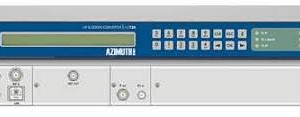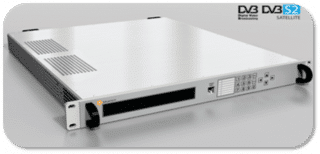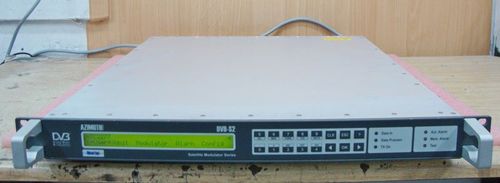The DVB-S2 satellite demodulator NTC/2263/xF is a member of the field-proven modular Azimuth series and is designed to receive and demodulate a single DVB-S2 modulated signal before correcting and detecting transmission errors and restoring the output digital signal in formats such as IP or MPEG Transport packets. The NTC/2263/xF has been designed for the reception of highspeed TELCO or IP data in backbone and trunking infrastructures, as well as for the reception of digital TV and HDTV signals for applications where these signals are not decoded immediately (such as digital turn-around for example). This demodulator is equipped with a dual L-band input with frequency range spanning from 950 to 2150 MHz. The input is selectable and provides DC power and band selection signals compatible with most professional and commercial LNB’s. Optionally, one L-band input can be fitted with a 50-180 MHz block up converter. The FPGA based NTC/2263/xF version handles data rates in DVBS2 from 1 Mbaud up to 29.1 Mbaud in QPSK, up to 28 Mbaud in 8PSK and up to 21 Mbaud in 16 APSK modulation schemes. As with all Newtec modulators and demodulators, the data rate can be limited (and upgraded later on via password) to lower rates, thus resulting in a lower initial investment.
The NTC/2263/xF demodulates in CCM (Constant Coding and Modulation). The demodulated signal is an MPEG Transport Stream. Future versions of the demodulator are planned within short. They will use more of the advantages offered by the DVB-S2 standard. Two output slots can be fitted with a range of interface cards. Several DVB (ASI, SPI, LVDS) and TELCO (HSSI, G703, IP) interface cards are available. All Control and Monitoring parameters are available locally on the front panel (LCD display & keyboard) and remotely through a web interface (HTTP) or through the RS-485/232 port or through the 10/100 Base-T Ethernet port. The last two use the RMCPv2 protocol. There is optionally an SNMP + MIB agent. Also, a dual contact closure output is available for 2 types of summary alarms: one contact is operated in case of device alarms, while the other contact opens (or closes) in case of input or output interface alarm.
For more details, please see Data Sheet: Newtec NTC.2263.
For more information, please contact us at sales@ai-sat.com






